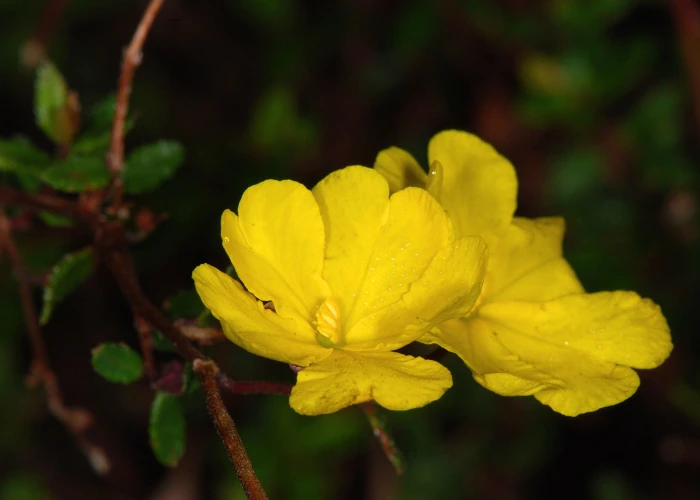Trailing Guinea-Flower
(Hibbertia empetrifolia)
Trailing Guinea-Flower (Hibbertia empetrifolia)
/
/

Pengo
CC BY-SA 3.0
Image By:
Pengo
Recorded By:
Copyright:
CC BY-SA 3.0
Copyright Notice:
Photo by: Pengo | License Type: CC BY-SA 3.0 | License URL: https://creativecommons.org/licenses/by-sa/3.0 | Uploader: Pengo | Publisher: Wikimedia Commons | Title: Hibbertia_empetrifolia_01_Pengo.jpg | Notes: Photo of ''[[Hibiscus denudatus]]'' (pale face) in [[Palm Canyon]], California, taken March 2005 by [[User:Stan Shebs]] {{GFDL-self}} |






















Estimated Native Range
Climate Requirements for Broken Arrow, Oklahoma
| This Plant | Your Site | Plant Suitability for Your Location | ||
|---|---|---|---|---|
| • Precipitation | 8" - 89" | 41" | Aquatic | Aquatic |
| • High Temp. | 62°F - 100°F | 93°F | Your summer temperatures are normal for this plant. | Excellent |
| • Low Temp. | 29°F - 52°F | 25°F | Your winter temperatures may be too cold for this plant | Too cold |
This plant should grow very well at your location but requires an aquatic environment.
Summary
Hibbertia empetrifolia, commonly known as Trailing Guinea-flower, is a perennial shrub native to heathlands and open forests of south-eastern Australia, including Tasmania. It is a low-lying to spreading shrub with wiry stems and typically grows to a height of 60 cm (24 in). The leaves are oblong to lance-shaped with the narrower end towards the base. From spring to early summer, it produces pale to bright yellow flowers that are arranged on the ends of branchlets, adding a splash of color to the garden. The flowers are moderately showy and attract pollinators.
Trailing Guinea-flower is valued for its hardiness and adaptability, making it one of the best-suited species of Hibbertia for garden cultivation. It offers bright yellow flowers and is frost-resistant, tolerating some dryness. However, it thrives with adequate moisture. It is often used as a ground cover or in rockeries due to its spreading habit. In cultivation, it prefers full sun to part shade and well-drained soils with medium drainage. While it is generally low-maintenance, it can be susceptible to root rot in poorly drained soils.CC BY-SA 4.0
Trailing Guinea-flower is valued for its hardiness and adaptability, making it one of the best-suited species of Hibbertia for garden cultivation. It offers bright yellow flowers and is frost-resistant, tolerating some dryness. However, it thrives with adequate moisture. It is often used as a ground cover or in rockeries due to its spreading habit. In cultivation, it prefers full sun to part shade and well-drained soils with medium drainage. While it is generally low-maintenance, it can be susceptible to root rot in poorly drained soils.CC BY-SA 4.0
Plant Description
- Plant Type: Shrub
- Height: 1-2 feet
- Width: 1-2 feet
- Growth Rate: Moderate
- Flower Color: Yellow
- Flowering Season: Spring
- Leaf Retention: Evergreen
Growth Requirements
- Sun: Full Sun, Part Shade
- Water: Medium, High
- Drainage: Medium
Common Uses
Bee Garden, Butterfly Garden, Low Maintenance, Rock Garden, Street Planting
Natural Habitat
Native to heathlands and open forests of south-eastern Australia, including Tasmania
Other Names
Common Names:
Scientific Names: Hibbertia empetrifolia, Hibbertia billardieri var. scabra
GBIF Accepted Name: Hibbertia empetrifolia (DC.) Hoogland